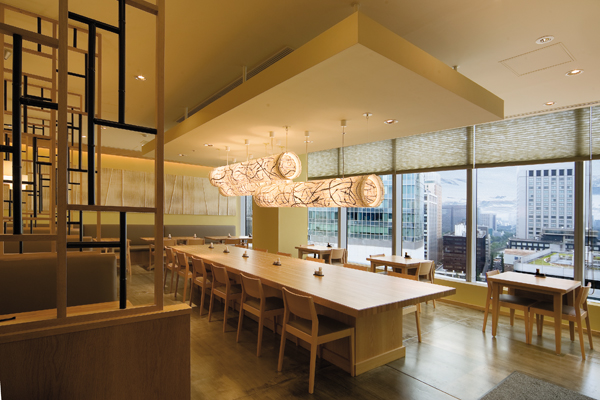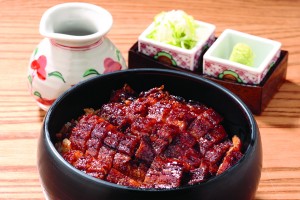Nagoya style oak smoked eel in the heart of Tokyo.
Summer in Japan is hot, humid and borderline unbearable for foreigners and Japanese alike. A good way to alleviate summer fatigue and build your stamina, according to many locals, is with a traditional dish of Japanese fresh water eel, known as unagi.
Traditionally enjoyed on doyo no ushi no hi, said to be the hottest day of the year in the old Japanese calendar, (in 2012 it was on July 27) unagi is rich in minerals, vitamins and protein, making it sought after as much for its health benefits as its delicate texture and flavour. For perhaps thousands of years the tradition, linked to the teachings of experts in Chinese medicine, has been followed but today, we are interested in flavour.
“The important things are how you choose the unagi, the way you grill it, and your artisan spirit,” says Hiroshi Suzuki 32, president of Hitsumabushi Binchotan. “In order to offer the best possible grilled unagi, you need a lot of experience and I’ve been studying techniques and cooking it for many years.”
An advocate for experienced unagi chefs, Suzuki shared his thoughts on traditional Japanese apprenticeships. “In the past, you would have to absorb information just by watching your master chef work,” Suzuki says, “I went through ten years of harsh training, starting when I was 22 but I don’t think it was all necessary or beneficial to my cooking. I wanted to share what I had learned in a more rational and efficient way, to keep up with current trends and globalization.”
Suzuki, now 53, streamlined his teaching process by providing his disciples with manuals explaining when a particular species of unagi was in season, when it tastes best and how it needs to be grilled. He is passionate about eel, which he sees as far more than just an average meal or something to simply cool you down, and hopes to further spread his craft and philosophy by opening a Bincho Brand restaurant in New York City to add to the latest Sky Tree addition in the near future.
There are many varieties of eel worldwide and seasonal availability varies depending on the species and its place of origin. “That’s why we don’t limit ourselves to a particular species,” Suzuki says, “At Hitsumabushi Bincho we procure unagi from all over Japan, enabling us to serve the best seasonal possible dish we can.”
“We adjust the flames and cooking temperature for each individual unagi,” Suzuki explains, “and as the name of our establishment implies, at Hitsumabushi Bincho we only use the finest quality bincho charcoal (made from oak), which allows us to grill the unagi to tender, succulent perfection and gives it extra flavour.”
Eel is often steamed but here, true to the Nagoya style, it is the smoke and flames that do the work, “Combined with our secret home-made sauce,” Suzuki proudly tells us, “our kabayaki unagi dish is an experience like no other, browned to just the right shade.”
Suzuki’s blend of artisan spirit and efficient modern business practices led to the creation of his unique “bincho” system. Weekender got a taste of Suzuki’s Hitsumabushi, a Nagoya favourite which is prepared by heaping a generous portion of thinly sliced kabayaki unagi on top of a small tub full of rice, called o-hitsu. We were told to mix the unagi into the rice (an action called mabushi in Japanese), allowing for a multitude of different tastes and textures to develop. The chef was right about the colour, too, which is an inviting almost caramelized deep shade.
The eel has a gorgeous, rich aroma and the flesh melts in your mouth. This food is so satisfying and has been made with such passion that we would come back whatever the weather.
Hitsumabushi has branches in Ginza, Ikebukuro (inside PARCO) and at the Sky Tree Solamachi mall. See their website for more details.










